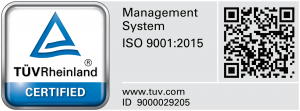
The oil and gas industry is one of the world's most complex and challenging industries, with operations spanning vast distances and challenging environments. For decades, companies in this sector have relied on manual labour and outdated technologies to manage their operations. However, the industry is experiencing a significant transformation with modern factory automation solutions.
Oil & gas automation, or oilfield automation, refers to using automated solutions to enhance various aspects of oil companies' operations. These include upstream and downstream activities such as oil extraction, pipeline construction, product marketing, regulatory compliance, and overall business efficiency, among other applications.
According to Marketsandmarkets Research, the market size of industrial automation in the oil & gas sector was USD 14.7 billion in 2020 and is anticipated to reach USD 18.7 billion by 2025. It is projected to grow at a compound annual growth rate (CAGR) of 4.7% from 2020 to 2025. The expansion of the industrial automation oil & gas market is propelled by incorporating IIoT, which enhances value in industrial automation, and the efficient and effective exploration of aging reservoirs.
PLCs (Programmable Logic Controllers) are commonly used in oilfield automation to control and monitor various processes and equipment. Some of the PLC uses include well control, pumping compression systems, tank level monitoring, safety systems, and data acquisition and reporting. SCADA (Supervisory Control and Data Acquisition) systems are extensively used across the oil and gas industry to monitor and control various production, refining, and distribution processes such as offshore platform monitoring, pipeline monitoring control, wellhead monitoring, tank farm management, and refinery operations. By also leveraging current automation technologies such as IOT and RPA, oil and gas companies can lower engineering hours, data interpretation time, maintenance costs, time-to-market ratio and, most importantly, increase productivity.
One of the most significant benefits of oilfield automation is increased efficiency. Automated systems can perform tasks faster and more accurately than humans, reducing the risk of errors and minimizing downtime. This is particularly important in the oil and gas industry, where even small delays can result in significant financial losses.
Factory automation solutions can also improve safety in the oil and gas industry. By automating hazardous or dangerous tasks, companies can reduce the risk of accidents and injuries, protecting both workers and the environment. This is critical in an industry with a high risk of accidents and safety incidents.
Another benefit of factory automation solutions is improved data management. Automated systems can collect and analyze data more quickly and accurately than humans, providing valuable insights into operations and enabling companies to make better-informed decisions. This, in turn, can lead to better cost control, improved productivity, and higher profits.
One example of factory automation solutions in the oil and gas industry is the use of drones for inspections. Drones can be used to inspect pipelines and other infrastructure, providing detailed images and data on the condition of the equipment. This can help companies to spot potential issues before they become serious problems, reducing the risk of equipment failures and downtime.
Another example is the use of robotic process automation (RPA) technology for administrative tasks such as data entry and record-keeping. RPA can automate repetitive tasks, freeing up time for workers to focus on more complex tasks that require human expertise.

Photo credit: FreeWave Technologies
However, there are also challenges associated with factory automation solutions in the oil and gas industry. The upfront costs of implementing automated systems can be significant, and there is a risk that some workers may lose their jobs. Additionally, the complexity of operations in the oil and gas industry means that some tasks may not be suitable for automation. Some of these challenges are elaborated on below:
Oil and gas companies often have existing systems, equipment, and infrastructure that may not be compatible with new automation technologies. Integrating automation solutions seamlessly with legacy systems can be complex and require careful planning to ensure smooth operations and data interoperability.
Shifting to an automated environment can significantly impact the workforce. Employees may require retraining or upskilling to adapt to new roles and responsibilities. Managing the transition, addressing concerns, and providing adequate support during this transformation is crucial for successful adoption.
Automation systems, particularly those connected to the internet and other networks, introduce new cybersecurity vulnerabilities. Protecting critical infrastructure, data, and intellectual property from potential cyber threats is a major challenge. Robust security measures and protocols must be implemented to safeguard automation systems and maintain data integrity.
The initial investment in oilfield automation technologies can be substantial, involving the procurement of hardware, software, and infrastructure upgrades. Companies must carefully evaluate the cost-benefit ratio and assess the expected ROI over time to justify the investment and ensure long-term profitability.
The oil and gas industry is subject to various regulations and standards related to safety, environmental impact, and operational practices. Implementing automation solutions while ensuring compliance with these regulations can be complex. Companies must navigate regulatory requirements and design automation systems that meet or exceed industry standards.

Opportunities in Industrial Automation Oil & Gas Market. Photo credits: Marketandmarket Research
Overcoming these challenges requires a strategic approach, collaboration with experts, and a thorough understanding of the specific needs and goals of the organization. Successful adoption of oilfield automation involves careful planning, effective change management, and ongoing optimization to maximize the benefits and mitigate potential risks.
PLCs are also integral to oilfield automation by providing precise control, real-time monitoring, and reliable safety measures. They enhance efficiency, reduce downtime, and improve oilfield operations' overall productivity and safety. SCADA plays a vital role in integrating and visualizing data from various sources, enabling operators to make informed decisions, optimize operations, and enhance safety and productivity.
In conclusion, factory automation solutions offer significant benefits for the oil and gas industry, including increased efficiency, improved safety, and better data management. While there are challenges associated with implementing these solutions, the potential benefits make them a worthwhile investment for companies looking to improve their operations and remain competitive in a rapidly evolving industry. By embracing factory automation solutions, the oil and gas industry can drive innovation, improve performance, and create a more sustainable future for the industry and the planet.


